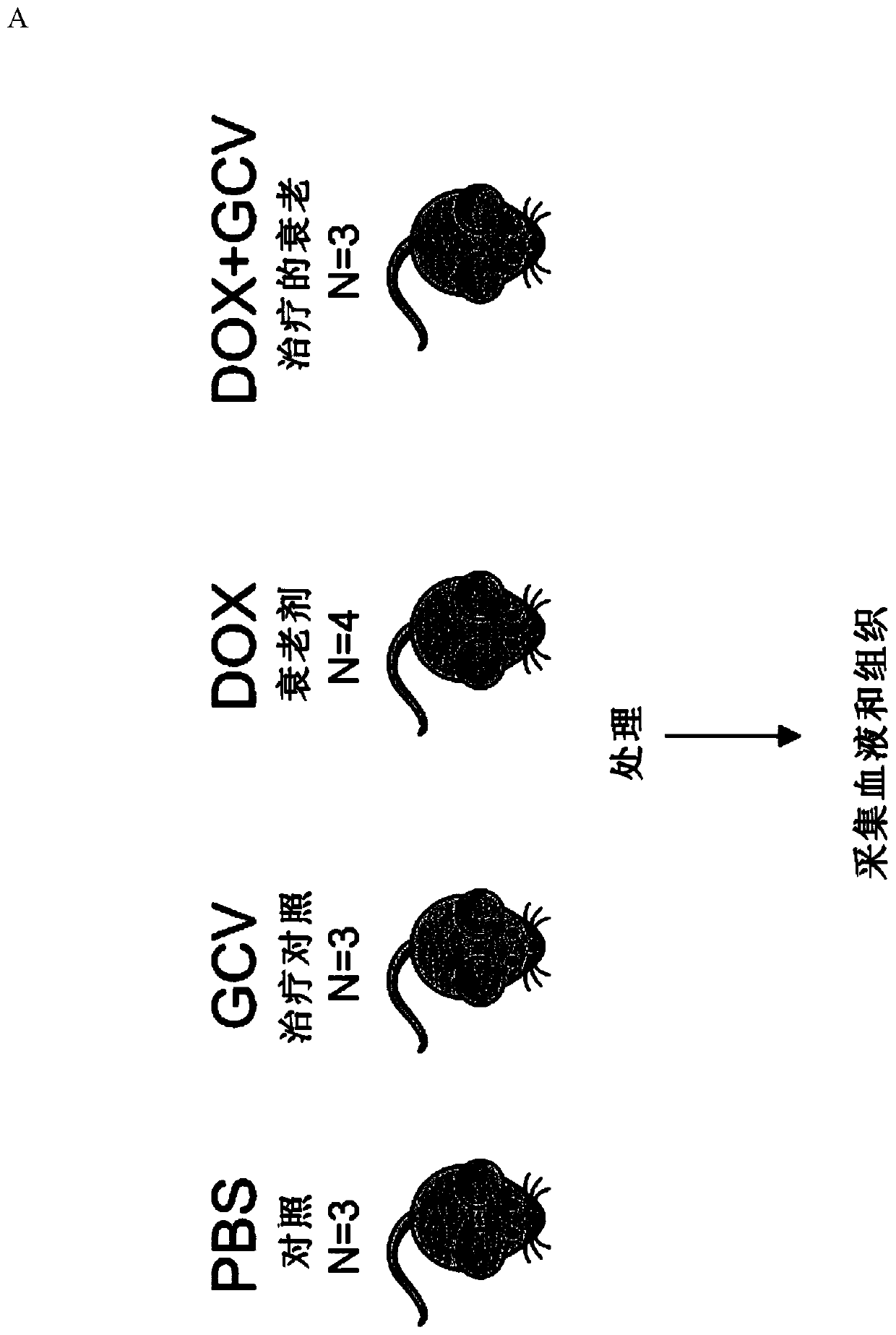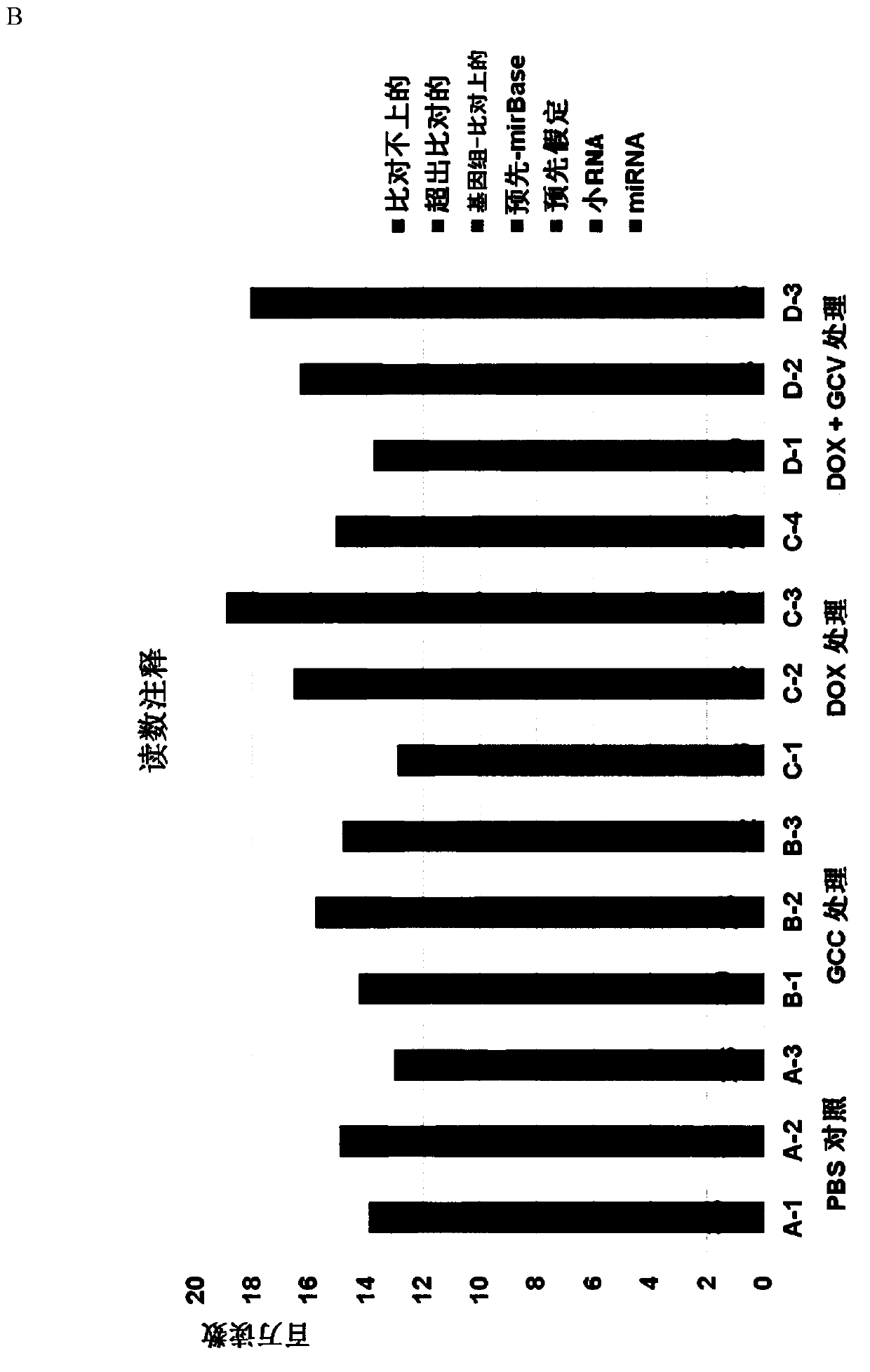Novel biomarkers for detecting senescent cells
A senescent cell and cell-free technology, which is applied in biochemical equipment and methods, microbiological determination/inspection, etc., can solve the problems of unsatisfied and missing detection of micro-innovative biomarkers and diagnostic methods for senescent cells
- Summary
- Abstract
- Description
- Claims
- Application Information
AI Technical Summary
Problems solved by technology
Method used
Image
Examples
Embodiment 1
[0273] 1. Materials and Methods
[0274] 1.1. Mice manipulation and serum sampling
[0275] p16-3MR (Demaria et al, 2014, Developmental Cell 31:722-733) mice were housed and housed at the AALAC-accredited Buck Institute for Research on Aging (Novato, CA) in the facility. 10 to 12 weeks old p16-3MR male mice were used in the experiment. The mice were divided into 4 groups with 3 mice in each group. In group A, control mice were injected with PBS. In group B, mice were treated with ganciclovir (GCV) (Sigma-Aldrich) in PBS for 5 consecutive days. In group C, mice were treated with doxorubicin hydrochloride (Sigma-Aldrich) in PBS. In group D, mice were first treated with doxorubicin and then GCV 10 days later. Mice were intraperitoneally injected with 10 mg / kg doxorubicin hydrochloride, and injected with GCV dissolved in PBS at a concentration of 25 mg / kg every day for 5 consecutive days. Four days after the last GCV administration, animals were euthanized with CO2 and bled...
Embodiment 2
[0307] 1. Materials and Methods
[0308] 1.1. Mice manipulation and serum sampling
[0309] p16-3MR (Demaria et al, 2014, Developmental Cell 31:722-733) mice were housed and maintained in the animal facility of the AALAC-accredited Buck Institute on Aging (Novato, CA). 10 to 12 weeks old p16-3MR male mice were used in the experiment. Mice were divided into 4 groups, 8 in each group, 5 females and 3 males. In group A, control mice were injected with PBS. In group B, mice were treated with ganciclovir (GCV) (Sigma-Aldrich) in PBS for 5 consecutive days. In group C, mice were treated with doxorubicin hydrochloride (Sigma-Aldrich) in PBS. In group D, mice were first treated with doxorubicin and then GCV 10 days later. Mice were intraperitoneally injected with 10 mg / kg doxorubicin hydrochloride, and injected with GCV dissolved in PBS at a concentration of 25 mg / kg every day for 5 consecutive days. 4 days after the last GCV administration, with CO 2 Animals were euthanized an...
PUM
 Login to View More
Login to View More Abstract
Description
Claims
Application Information
 Login to View More
Login to View More - R&D
- Intellectual Property
- Life Sciences
- Materials
- Tech Scout
- Unparalleled Data Quality
- Higher Quality Content
- 60% Fewer Hallucinations
Browse by: Latest US Patents, China's latest patents, Technical Efficacy Thesaurus, Application Domain, Technology Topic, Popular Technical Reports.
© 2025 PatSnap. All rights reserved.Legal|Privacy policy|Modern Slavery Act Transparency Statement|Sitemap|About US| Contact US: help@patsnap.com



